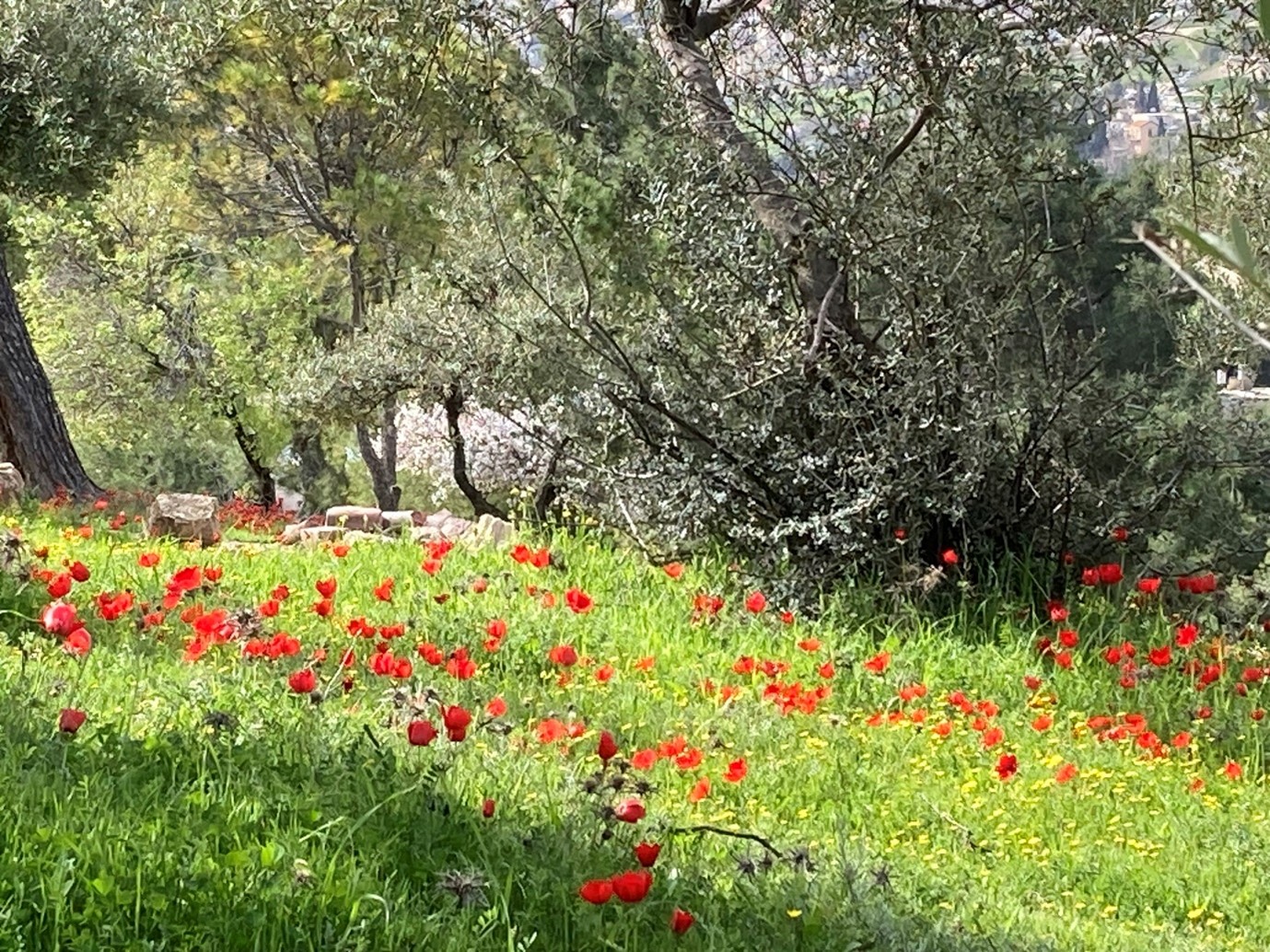A message from Jerusalem for Holy Week and Easter

Dear Friends,
One of the great pleasures of living in East Jerusalem since the end of January has been a daily walk from the Mount of Olives to the Old City, across the Kidron Valley. At this time of year the valley is beautifully green. The grass is long, the silver-grey of the olive trees shimmers, and the wildflowers have been profuse. Missing out on English daffodils and crocuses, I have particularly enjoyed the blood-red of the anemone coronaria, great carpets of which are spread around the valley.
I thought of that wonderful display when I heard the Gospel for the Fifth Sunday of Lent (which this year I heard beside the River Jordan, where the community of St George’s Cathedral celebrates a Passiontide Eucharist every year). Jesus says to Philip and Andrew ‘Very truly, I tell you, unless a grain of wheat falls into the earth and dies, it remains just a single grain; but if it dies, it bears much fruit’. Wanting to warn his friends about what lies ahead, Jesus offers not an abstract teaching but an image with which they are all familiar: an image drawn from the rhythm of the agricultural year; the rhythm of the seasons; the rhythm in which death gives way to life. A grain is buried in the earth – and it bears much fruit.
I had an opportunity of studying that Gospel passage in the company of Palestinian Christians before I heard it read in the liturgy. The facilitator of the group reminded us that we were reading it in the city of the empty tomb. He reminded us that we are women and men of the resurrection. So, he asked, what were the signs of resurrection hope that we could see around us?
There followed one of the deepest and most profound silences that I have ever experienced. The night before, the Israeli security forces had shot and killed a twelve-year-old Palestinian boy in the city. The Israeli Security Minister had hailed the officer responsible as ‘a warrior’ who had done ‘an exemplary job’.
Signs of hope?
As dusk fell on the first Good Friday the followers of Jesus scattered. The darkness was all-consuming. They could see no signs of light or life. No signs of hope. And even when they first heard news of the empty tomb, they were sceptical – and afraid. Perhaps that will be Jerusalem’s experience this year. Gaza’s torment continues. The occupation of Palestine continues. The tomb remains sealed. The great stone blocks out the light.
And yet. And yet the blood-red flowers bloom in the Kidron Valley. The rhythm of the agricultural year; the rhythm of the seasons; that rhythm asserts itself, just as Jesus knew it would when he spoke to Philip and Andrew. The rhythm in which death gives way to life. A grain is buried in the earth – and it bears much fruit.
Here’s the thing: the rhythm is present from the very beginning when, we are told, God brings light out of darkness. The rhythm is no accident; it is God’s work; it is God’s way; it discloses to us the very nature of God. The darkness of night appears impenetrable, but it is driven away at dawn; the harshness of winter appears overwhelming, but first shoots of spring emerge; the finality of death appears total, but on the third day the stone is rolled away. Darkness, harshness, and death are not sovereign. War and occupation are not sovereign.
We are assured that their cruel and violent power will not ultimately prevail because on Easter morning the tomb is empty, and because the empty tomb is the sign of hope towards which our Passiontide journey is ineluctably taking us. The Christ who died in this city lives in this city. He lives in every place, and in every heart. The blood-red flowers of Jerusalem bear witness to the One who is holy and strong, holy and immortal: the One who alone is sovereign. The sign of hope is God’s eternal love for us, made manifest even here, even now.
Please pray for the peace of Jerusalem this Holy Week and Easter.
With the assurance of my prayers for you,
Your friend,
Nick




